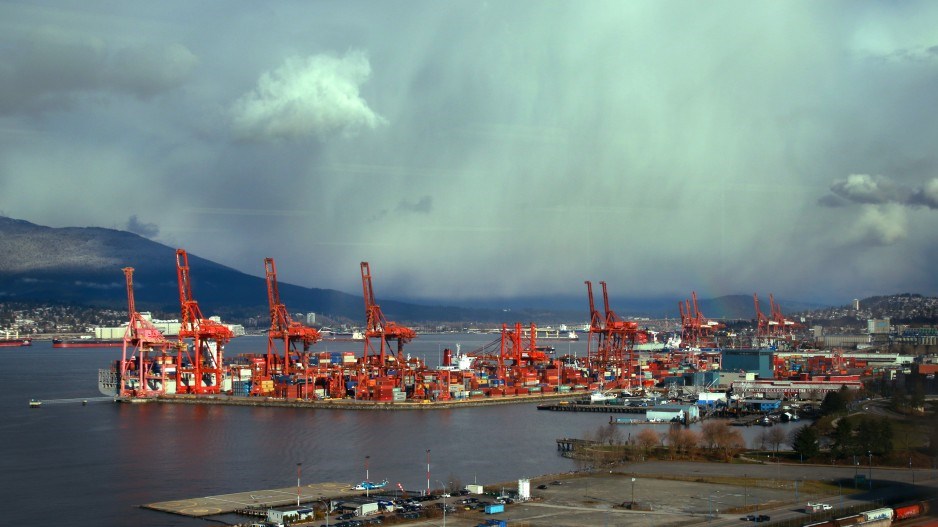Vancouver’s profile in shipping’s major leagues is on the rise, according to numbers collected by a global shipping industry data company.
Alphaliner’s recently released list of the top 110 container ports in the world shows the Port of Vancouver ranked at No. 45 in 2017. That’s up from its No. 48 position in 2016.
Vancouver is the only Canadian port in the list’s top 50.
The ranking reflects the record 3.3 million 20-foot equivalent units [TEUs] handled by Vancouver’s container terminals in 2017, an 11% increase over 2016’s total.
It also supports analysts’ views that trade on the robust transpacific cargo route is recovering from the dark days of 2016.
In its January 30 container market trends update, U.K.-based shipping consultancy Drewry forecast global container growth to continue at around 4% for 2018, which would add another nine million TEUs to the world’s total this year.
Philip Damas, head of Drewry’s Supply Chain Advisors, said 2018 would be the second year in a row in which every region of the world will see growth.
Drewry consequently raised its 2018 global TEU growth forecast to 4.3% from 3.6%.
According to Alphaliner, the top 110 container ports handled a combined throughput of 600 million TEUs in 2017 compared with 565 million in 2016. Only 12 of the 110 reported lower volumes in 2017 compared with 2017.
That relatively buoyant increase reflects a continued recovery from a year when major container carriers, afflicted by a stalled global economy and persistent industry overcapacity, collectively lost approximately US$5 billion.
The Port of Vancouver’s 2016 was also a challenge.
Annual port revenue dropped 1.7% to $235 million compared with fiscal 2015 and overall cargo shipped through the port was down 2% to 136 million tonnes from 138 million tonnes during 2015.
Asian ports continue to dominate the upper end of the container ports list. According to Alphaliner, eight of the top 10 are in Asia, including No. 1 ranked Shanghai, which handled 40 million TEUs in 2017. Los Angeles/Long Beach, ranked No. 9 with its 16.9 million TEUs handled in 2017, was the only North American port in the top 10.
While Drewry predicts a steady but slow recovery for the global container shipping sector this year and next, several wild-card factors could scupper that forecast for container traffic on major routes such as the transpacific. They include escalating trade tensions between the United States and China, increased competition from East Coast and Gulf Coast container ports and the regionalization of manufacturing resulting from automation, artificial intelligence, 3D printing and other technical disruption.
@timothyrenshaw




